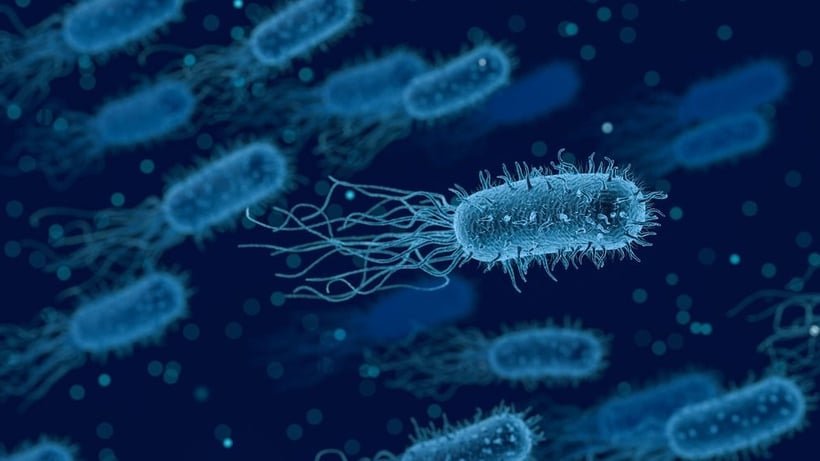
An alarming surge in cases of the rare (and potentially fatal) listeriosis disease has put Australian health authorities on high alert. Genetically related clusters have appeared in Queensland, New South Wales, and Victoria, bringing the total confirmed cases to nine. This puts millions of Australians at risk, particularly those with compromised immune systems.
Mater Hospital: Ground Zero
Brisbane’s Mater Hospital was identified as one of the outbreak locations last Saturday, where four patients tested positive for the disease. All four patients had pre-existing health conditions, further complicating the scenario. No deaths have been reported in relation to this outbreak.
Unprecedented Numbers
New South Wales has already reported 25 cases of listeriosis—equivalent to the expected case count for an entire year. Victoria has also confirmed the presence of “numerous clusters” across the state.
The Hunt for the Source
While not confirmed, a shredded chicken product is suspected to be the source of the outbreak.
Initial speculations suggested that contaminated hospital food might be the cause. However, health authorities have not identified any common food source among the linked cases. The investigation is still underway to determine the source of the outbreak.
Ongoing Investigations
Queensland’s Chief Health Officer, Dr John Gerrard, stated, “There is potential for further cases, as symptoms can take up to two months to appear after consuming contaminated food. Tests are currently underway to investigate several potential sources.”
OzFoodNet, a federal department, is spearheading an investigation into the outbreak. According to Queensland Health, preliminary test results are expected in the upcoming weeks.
Public Awareness is Key to Containment
Authorities have called for heightened public vigilance, advising anyone experiencing flu-like or gastro symptoms to consult their GP. A simple blood test can detect the presence of the listeria bacteria, allowing for prompt treatment where necessary.
As the investigation continues, the Australian public is urged to stay informed and vigilant to prevent further spread of this dangerous illness.
What is Listeria?
Listeria is a type of bacteria that causes an infection called listeriosis. The bacteria, officially named Listeria monocytogenes, are found in soil, water, and some animals, including poultry and cattle. They can also be present in unpasteurised dairy products and various processed foods.
How is Listeria Transmitted?
Listeria is commonly transmitted through the consumption of contaminated foods. Foods that are often associated with listeria contamination include:
- Raw fruits and vegetables
- Raw or undercooked meat and seafood
- Unpasteurised milk and dairy products
- Deli meats and hot dogs
- Soft cheeses made with unpasteurised milk, such as feta, brie, and camembert
- Smoked seafood
- Pre-packaged salads
Symptoms & Risk Groups
Symptoms generally appear within one to two weeks but can take as long as 90 days to show up. The long and variable incubation period can make identifying the specific food source that led to the infection challenging.
Because of this extended and variable incubation period, health authorities must act swiftly when an outbreak occurs, as additional cases could emerge long after individuals have consumed the contaminated product. Likewise, individuals who suspect they may have consumed contaminated food should monitor for symptoms and seek medical advice if they develop signs of listeriosis, even if some time has passed since the suspected exposure.
In healthy individuals, a listeria infection may lead to mild symptoms like:
- Fever
- Muscle aches
- Diarrhoea
- Headache
- Stiff neck
- Confusion
- Loss of balance
- Convulsions
In pregnant women, it can even lead to miscarriage, stillbirth, or life-threatening infection of the newborn.
Diagnosis & Treatment
Diagnosis of listeriosis is generally through blood tests and spinal fluid tests. Once diagnosed, the condition is commonly treated with antibiotics. Early detection and treatment are crucial for at-risk populations to avoid serious complications.
Prevention
The best way to prevent listeriosis is by following good hygiene practices, such as washing fruits and vegetables thoroughly, cooking meat to safe internal temperatures, and avoiding raw or unpasteurised dairy products. It’s also essential to practise good kitchen hygiene by washing hands, cutting boards, and utensils that have been in contact with raw food.
As listeria can grow at refrigerator temperatures, keeping the fridge clean and discarding any food that looks or smells spoiled is essential.
Follow AIFS for Updates
For accurate and up-to-date information on the listeriosis outbreak and other food safety issues, follow Food Safety News from the Australian Institute of Food Safety (AIFS). We are closely monitoring the situation and will provide timely updates to help you protect yourself and your community.




